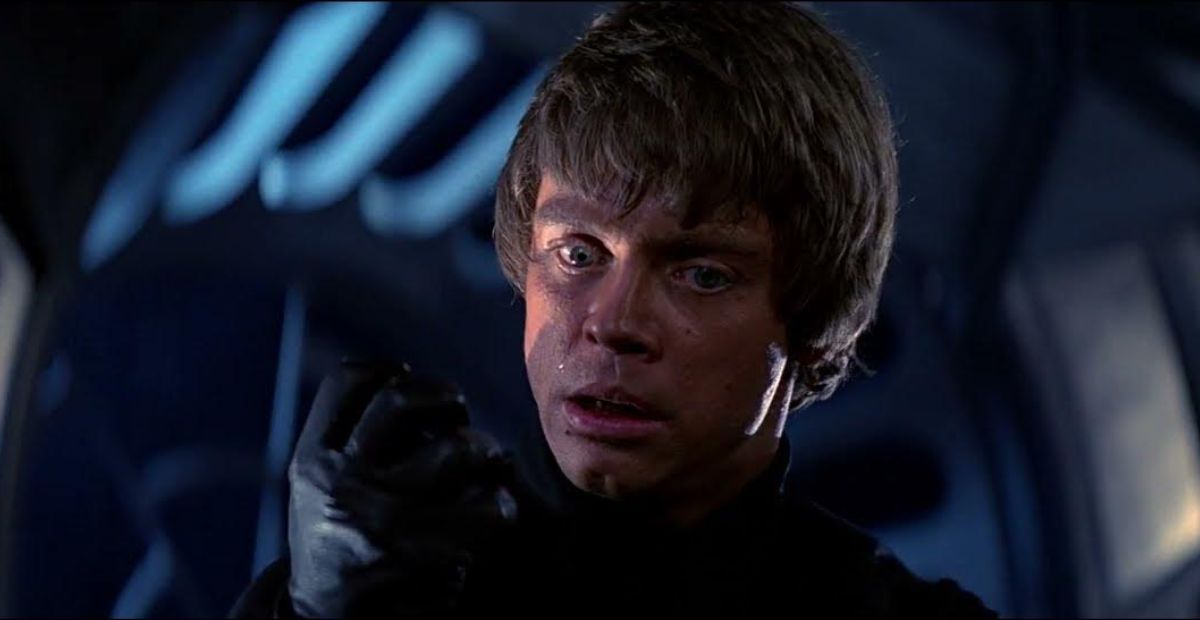The moment when Luke defeats his father aboard the second Death Star is one of the most debated scenes in Star Wars. Some fans believe Luke tapped into the dark side to overpower Vader—others argue he was still walking the line without fully giving in.
But there’s another question that often gets overlooked: right after Luke delivers that final, furious strike—severing Vader’s cybernetic hand, he suddenly pauses. He stares at the mechanical limb, then glances down at his own robotic hand… and lets go of his weapon.
So what really happened in that moment? Why did Luke look at Vader’s robotic arm and then at his own, before throwing away his lightsaber?
Luke Was Afraid He Was Becoming the Next Darth Vader
The very first reason I want to point out is that Luke was afraid what he saw inside the Dark Side Cave on Dagobah might come true if he struck down Vader in anger. When Luke entered the cave, it clearly showed him his greatest fear—and at that time, it was facing Darth Vader.
We all remember the scene: Luke ignites his saber, attacks the shadowy figure, and cuts Vader down. But when the helmet rolls across the ground and bursts open, it doesn’t reveal Vader’s face—it reveals Luke’s. That haunting vision planted the idea that he could become the very thing he was fighting against.
And that fear only grew after the duel on Cloud City. As we know, Vader severed Luke’s right hand, and by the end of The Empire Strikes Back, Luke was given a cybernetic replacement—just like his father.
The movie doesn’t show us how Luke felt about that new hand, but we get more insight in the canon novel From a Certain Point of View: The Empire Strikes Back. In one chapter, while a medical droid prepares to install the prosthetic, Luke reflects: “Maybe this was meant to be. Maybe I was destined to lose my hand in exchange for something else. I’ve made mistakes… I don’t deserve to have it fixed.”
The droid tries to reassure him, explaining that cybernetic limbs are common—even Sith Lords use them. But that only deepens Luke’s discomfort. He replies quietly, “Sith like Darth Vader…”
That fear, that physical and symbolic connection to Vader, never fully left him. And when Luke saw Vader’s severed mechanical arm on the Death Star, it reminded him of his deepest fear: becoming the very evil he swore to resist.
Luke’s Robotic Hand Helped Him Regain His Calm
So we’ve just explored how Luke feared becoming the next Darth Vader—but ironically, it was his cybernetic hand, the very thing that physically connected him to his father, that also grounded him in the moment.
After brutally severing Vader’s mechanical hand, Luke stood over him, lightsaber raised. But then he paused. He looked at Vader’s severed cybernetic wrist—and then at his own black-gloved prosthetic. The resemblance was unmistakable. In that instant, the rage drained from him.
As described in Star Wars: Return of the Jedi (Illustrated Edition):
“The hand, along with bits of metal, wires, and electronic devices, clattered uselessly away while Vader’s lightsaber tumbled over the edge of the span, into the endless shaft below, without a trace.
Luke stared at his father’s twitching, severed, mechanical hand—and then at his own black-gloved artificial part—and realized suddenly just how much he’d become like his father. Like the man he hated.”

In that moment, the hand didn’t represent injury or loss—it represented choice. It reminded Luke that he had the power to stop. That he didn’t have to finish what the Emperor wanted. That he didn’t have to become Vader.
After realizing what he could become, Luke looked back down at his father—defeated, broken, vulnerable. Then he looked at the Emperor, and back at Vader again. And in that silence, he finally understood.
The book described “Luke stared at his father beneath him, then at the Emperor, then back at Vader. This was Darkness—and it was the Darkness he hated. Not his father, not even the Emperor. But the Darkness im them. In them, and in himself.
And the only way to destroy the Darkness was to renounce it. For good and all. He stood suddenly erect, and made the decision for which he’d spent his life in preparation.”
And then, with the Emperor watching, Luke made his stand. “He hurled his lightsaber away. Never! Never will I turn to the dark side! You have failed, Palpatine. I am a Jedi, as my father was before me.”
In that defiant moment, Luke proved that being a Jedi wasn’t about power or combat—it was about conviction, compassion, and the courage to walk away from hate. Just like his father once fell in the name of fear, Luke rose in the name of hope.

